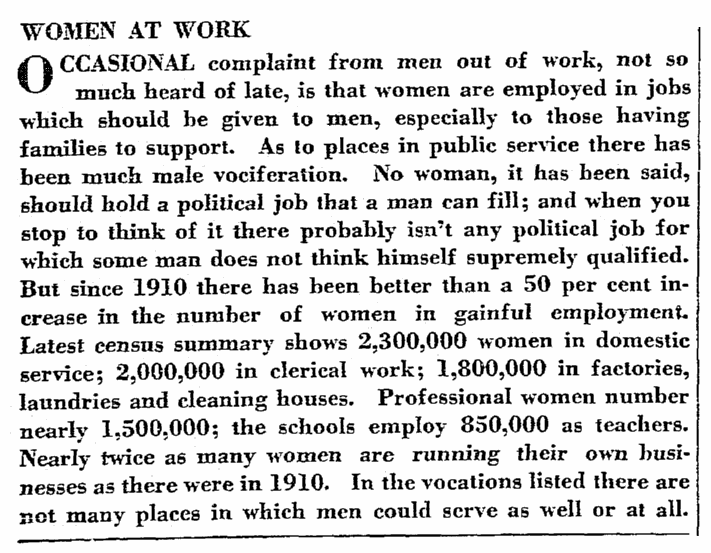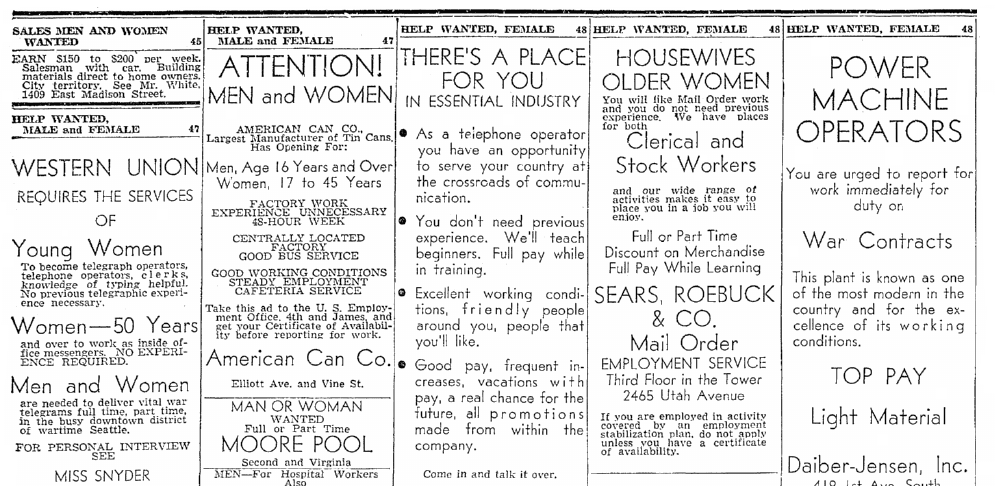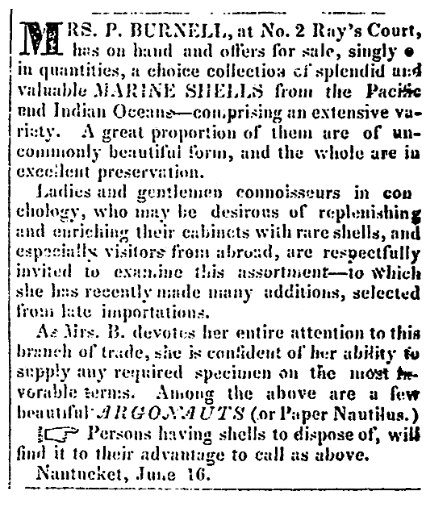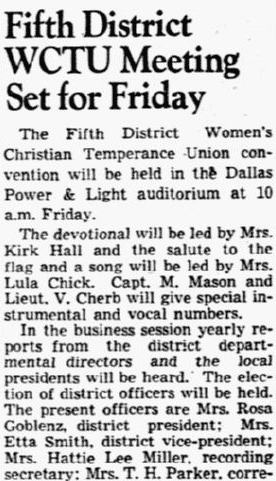Introduction: In this article, Gena Philibert-Ortega gives some search tips to help you learn about your female ancestor’s work outside the home. Gena is a genealogist and author of the book “From the Family Kitchen.”
Some genealogists make the mistake of thinking: “My grandmother didn’t work outside the home – she was just a housewife.” Some people may believe that women didn’t have jobs before the latter 20th century, but the fact is that throughout history, many women have had to work outside of the home due to their financial circumstances or because of war. Even women whose husbands or families owned their own business, contributed to ensure the success of that endeavor.

Women’s Work
What types of work did women do in past generations? Surprisingly, just about any kind of work – much more than what we typically associate with women. Occupations varied from those that focused on caring for others to working in cigar factories.
It goes without saying that working women, especially those in non-traditional jobs, historically faced a backlash from men – especially during times when their work life was seen as unnecessary and even frivolous.
This 1937 newspaper editorial starts off echoing men’s belief that working women should step aside to give jobs to men who are supporting families – remember, this was during the Great Depression. But then the statistics show that most women’s jobs were ones not traditionally sought after by men. The editorial states:
…since 1910 there has been better than a 50 per cent increase in the number of women in gainful employment. Latest census summary shows 2,300,000 women in domestic service; 2,000,000 in clerical work; 1,800,000 in factories, laundries and cleaning houses. Professional women number nearly 1,500,000; the schools employ 850,000 as teachers. Nearly twice as many women are running their own businesses as there were in 1910.

Remember the War Effort
Think that your female ancestors never worked? You might be surprised to find that they may have worked outside of the home during times of war. While World War II’s Rosie the Riveter is the most famous embodiment of women’s wartime work, women worked during previous wars as well. Remember that with the men serving on the battlefield, someone had to keep up with the need for agriculture and industry products – as well as everyday services to keep communities running.

During earlier wars, women were encouraged to fulfill the nation’s need for workers – only to later be told they were needed at home once the war was over. Because her employment may have spanned just a few years, your ancestor’s working life may not be recorded in traditional genealogy sources, like the census, that family historians rely on. Even if you can’t find what your female ancestor did, you can learn more about women’s war work from the newspaper.
Where and When Did She Live?
Creating a timeline and noting where and when your female ancestor lived might provide some clues to the possibility of her employment. In some places and time periods it would be more likely that women worked, or that women had increased opportunities for employment.
Such is the case for women who lived in Nantucket, where whaling was an important industry during the 19th century. Men working on whaling ships would be gone for long periods of time ranging up to five years, giving women the opportunity to work and even own their own businesses. Whaling was a dangerous industry and it was common for a husband or father to leave on a ship, never to return. So, women had to make their own living.
This advertisement from an 1841 Nantucket newspaper is for the shop of Mrs. P. Burnell, who sells and buys marine shells. The advertisement invites potential customers to see her selection that “are of uncommonly beautiful form.” Her advertisement states:
Ladies and gentlemen connoisseurs in conchology, who may be desirous of replenishing and enriching their cabinets with rare shells, and especially visitors from abroad, are respectfully invited to examine this assortment – to which she has recently made many additions, selected from late importations.

Make sure to take some time to learn more about the area and time period you are researching for clues about industries or jobs that women held.
What if She Didn’t Work?
Sure, not all women worked outside the home. Some women didn’t have to due to their husband’s or family’s income or wealth. But that doesn’t necessarily mean their life was entirely focused on cooking, cleaning, and raising children. Women who didn’t have to work to supplement the family income may have chosen to throw their efforts behind a social cause or volunteer work that benefitted the community. These women may have helped the less fortunate through a church auxiliary or benevolent society.
Volunteer work could have resulted in records. This paper trail might include membership lists, meeting notes, and even the products of their fundraising efforts such as quilts and cookbooks. Search newspapers by the name of the group she was a member of – newspaper articles will focus on meetings, conventions, and events.

Where Do I Look?
The federal decennial census is a great place to start your research, but be careful of the assumptions you make. My great-grandmother Mary Philibert worked her whole life – but if I just relied on the census, an incorrect assumption could be made that she was “just” a housewife. A look at city directories fills in her occupational history that was ignored by the census. It’s always crucial to fill in those census years with city directories and newspaper articles to get a more complete picture of your female ancestor’s life.
Other clues will exist in the form of histories of a local area, or even records found in an archive documenting bankruptcies, correspondence, or employee rosters.
A collection of old newspapers, such as GenealogyBank’s online Historical Newspaper Archives, is an important part of your family history research. Old newspapers can hold everything from the names of members present at an organizational meeting, to advertisements from women-owned businesses, to articles praising a woman’s longevity and her accomplishments.
One of the most important tips for researching women in newspapers is one we’ve discussed previously on this blog (see: Name Research Tip: Search Variations of Family First & Last Names). Keep a list of name variations that can be used as you conduct each search.
Let’s face it, your female ancestor can be listed in any number of combinations, and misspellings, of her given and married name. So, make sure you search all the variations. For example, if you are researching Dorothy Ann Jones who married George Albert Smith you would need to look for these types of variations:
- Dorothy Ann Jones
- Dorothy Jones
- A. Jones
- George Albert Smith
- G.A. Smith
- G. Albert Smith
- George Smith
- Dorothy Smith
Start Your Search Today!
Chances are your female ancestor worked to provide for her family, or she helped others through her volunteer work. Start today to learn more about the activities she was involved in and begin documenting her life.
Related Articles:
